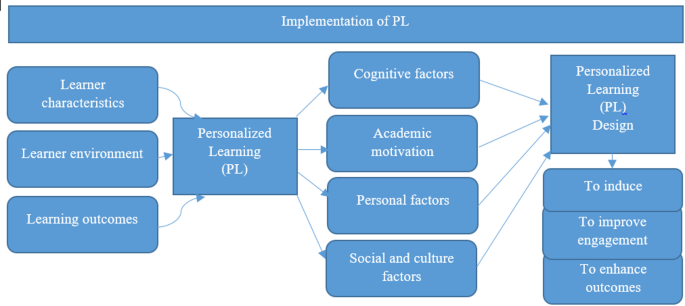Report on U.S. Gubernatorial Delegation to Switzerland: Aligning Workforce Development with Sustainable Development Goals
Executive Summary
A United States delegation, led by National Governors Association (NGA) Chair and Oklahoma Governor Kevin Stitt and joined by Delaware Governor Matt Meyer, visited Switzerland to study its Vocational and Education Training (VET) system. This initiative, part of Governor Stitt’s “Reigniting the American Dream” project, aims to inform U.S. workforce development strategies by examining a model renowned for its success in promoting quality education, decent work, and economic growth, in direct alignment with several United Nations Sustainable Development Goals (SDGs).
Alignment with SDG 4: Quality Education
The Swiss VET model is a prime example of achieving SDG 4, which aims to ensure inclusive and equitable quality education and promote lifelong learning opportunities. The delegation observed how the system provides relevant vocational skills for employment and entrepreneurship.
- Dual-System Approach: Approximately two-thirds of Swiss students aged 15-19 participate in a dual system, combining paid, on-the-job training with classroom-based vocational instruction.
- Comprehensive Training: Students can choose from 250 officially recognized training programs across a wide range of sectors, including healthcare, IT, finance, and manufacturing.
- Standardized Certification: Graduates receive a Federal VET Diploma or Certificate, which is recognized nationwide, ensuring the transferability of skills and maximizing opportunity, a key tenet of equitable education.
Contribution to SDG 8: Decent Work and Economic Growth
The visit highlighted the VET system’s direct impact on SDG 8 by promoting full, productive employment and decent work for all, particularly youth. The model is credited with Switzerland’s low youth unemployment rates and high business productivity.
- Earn While You Learn: Apprenticeships provide students with income while they train, offering a direct pathway to good-paying jobs post-graduation.
- Employer Collaboration: Programs are developed in close partnership with employers, ensuring that training is directly tied to labor market demands, fostering sustainable economic growth.
- Gubernatorial Goals: Governor Stitt’s challenge to create 250 new apprenticeships in Oklahoma and Governor Meyer’s executive order to increase youth apprenticeship opportunities in Delaware reflect a commitment to adopting these principles to achieve SDG 8 in their respective states.
Fostering SDG 9 and SDG 17: Industry, Innovation, and Partnerships
The delegation’s site visits underscored the VET system’s role in advancing SDG 9 (Industry, Innovation, and Infrastructure) and its reliance on SDG 17 (Partnerships for the Goals).
- Industry Integration: Visits to companies like Swisscom AG (IT), Pilatus (manufacturing), and Sika Technology demonstrated how apprenticeships are embedded within innovative industries, supplying a skilled workforce that drives technological advancement.
- Multi-Stakeholder Partnerships: The success of the Swiss model is built on a robust partnership between senior government officials, business leaders, industry associations, and vocational schools. This international knowledge-sharing mission between U.S. and Swiss officials further exemplifies the global partnerships needed to achieve the SDGs.
Future Outlook: The “Reigniting the American Dream” Initiative
The insights gained from the visit will inform the NGA’s yearlong initiative, which focuses on pillars that resonate strongly with the Sustainable Development Goals.
- Unlocking Economic Opportunity: Advancing entrepreneurship and economic mobility aligns with SDG 8 and SDG 10 (Reduced Inequalities).
- Empowering Every Learner: Reimagining education with on-the-job experiences is a direct application of principles supporting SDG 4.
- Energizing the Future: Powering America’s next chapter, including its AI future, connects to SDG 9 by ensuring the workforce is skilled for future industries.
1. Which SDGs are addressed or connected to the issues highlighted in the article?
SDG 4: Quality Education
The article’s central theme is the improvement of educational systems through vocational training and apprenticeships. It discusses the “Reimagine Learning” conference and the study of Switzerland’s vocational and education training (VET) model, which aims to make students “college ready or career ready.” This directly aligns with the goal of ensuring inclusive and equitable quality education.
SDG 8: Decent Work and Economic Growth
The initiative’s explicit goals are to “unlock economic opportunity,” create a “good jobs economy,” and achieve “low youth unemployment rates.” The apprenticeship model is presented as a direct pathway to “good-paying jobs” and workforce development, which are core components of promoting sustained, inclusive, and sustainable economic growth and decent work for all.
SDG 10: Reduced Inequalities
The article emphasizes providing opportunities for “every student” and “every Delawarean” to live the “American Dream.” By focusing on alternative pathways to success like apprenticeships, the initiative aims to provide economic mobility and inclusion for youth who may not pursue traditional college routes, thereby addressing inequalities in access to economic opportunities.
SDG 17: Partnerships for the Goals
The article describes a multi-stakeholder and international collaboration. A delegation of U.S. governors traveled to Switzerland to meet with “senior Swiss government officials, business leaders and industry associations.” This partnership is aimed at sharing knowledge and modeling successful systems to achieve educational and economic goals, reflecting the spirit of global partnership for sustainable development.
2. What specific targets under those SDGs can be identified based on the article’s content?
SDG 4: Quality Education
- Target 4.4: By 2030, substantially increase the number of youth and adults who have relevant skills, including technical and vocational skills, for employment, decent jobs and entrepreneurship.
- Explanation: The entire article focuses on the Swiss “vocational and education training (VET) model” and apprenticeships as a means to equip students with practical, job-ready skills in fields like “retail, health care, electrical, information technology, finance, manufacturing.” The goal is to help students “graduate high school with good-paying jobs.”
- Target 4.3: By 2030, ensure equal access for all women and men to affordable and quality technical, vocational and tertiary education, including university.
- Explanation: The apprenticeship model is presented as a key form of post-secondary technical and vocational education. The initiative’s goal to make these opportunities widely available for “every student” supports the aim of ensuring equal access to this type of training.
SDG 8: Decent Work and Economic Growth
- Target 8.6: By 2020, substantially reduce the proportion of youth not in employment, education or training.
- Explanation: The article explicitly states that Switzerland’s VET program is “credited with low youth unemployment rates.” The U.S. governors’ interest in this model is driven by the desire to replicate this success and reduce youth unemployment by providing clear pathways from education to employment.
- Target 8.5: By 2030, achieve full and productive employment and decent work for all women and men, including for young people and persons with disabilities, and equal pay for work of equal value.
- Explanation: The initiative aims to create a “good jobs economy” and “unlock economic opportunity.” The “earn while they learn” aspect of apprenticeships provides a direct route to productive employment and decent work for young people.
SDG 10: Reduced Inequalities
- Target 10.2: By 2030, empower and promote the social, economic and political inclusion of all, irrespective of age, sex, disability, race, ethnicity, origin, religion or economic or other status.
- Explanation: By promoting apprenticeships, the initiative seeks to provide viable and respected career paths for all students, regardless of their background or whether they pursue a traditional university education. The goal that “every Delawarean has the opportunity to live their American Dream” speaks directly to promoting economic inclusion.
SDG 17: Partnerships for the Goals
- Target 17.17: Encourage and promote effective public, public-private and civil society partnerships, building on the experience and resourcing strategies of partnerships.
- Explanation: The article highlights a partnership between U.S. state governments (public sector) and Swiss businesses like “Swisscom AG, Pilatus, Thermoplan, and Sika Technology” (private sector). The Swiss model itself is described as being “developed in close collaboration with employers,” demonstrating a public-private partnership model that the U.S. delegation is studying.
3. Are there any indicators mentioned or implied in the article that can be used to measure progress towards the identified targets?
Indicators for SDG 4 (Quality Education)
- Number of new apprenticeships created: This is a direct, quantifiable indicator mentioned in the article. Governor Stitt “challenged Oklahoma leaders to create 250 new apprenticeships this year.”
- Proportion of students in vocational programs: The article provides a benchmark by stating, “In Switzerland, about two-thirds of learners participate in apprenticeship programs between ages 15 and 19.” This percentage can be used as an indicator to measure the expansion of such programs in U.S. states.
- Number of recognized training programs: The Swiss model offers “250 officially recognized training programs.” The variety and number of available programs can serve as an indicator of the system’s maturity and reach.
Indicators for SDG 8 (Decent Work and Economic Growth)
- Youth unemployment rate: This is explicitly mentioned as a key outcome of the Swiss system. The article notes the program is “credited with low youth unemployment rates.” This is a primary indicator for measuring the success of implementing a similar model.
- Number of graduates obtaining jobs post-program: The goal for students to “graduate high school with good-paying jobs” implies that the employment rate of program graduates is a crucial success metric.
Indicators for SDG 17 (Partnerships for the Goals)
- Number and quality of partnerships: The article implicitly points to this indicator by listing the entities involved in the collaboration: U.S. governors, Swiss government officials, and specific private companies (Swisscom AG, Pilatus, etc.). The formation of new, similar public-private partnerships in the U.S. would be a measure of progress.
4. Create a table with three columns titled ‘SDGs, Targets and Indicators” to present the findings from analyzing the article.
| SDGs | Targets | Indicators |
|---|---|---|
| SDG 4: Quality Education | 4.4: Increase the number of youth and adults with relevant technical and vocational skills for employment. |
|
| SDG 8: Decent Work and Economic Growth | 8.6: Substantially reduce the proportion of youth not in employment, education or training (NEET).
8.5: Achieve full and productive employment and decent work for all. |
|
| SDG 10: Reduced Inequalities | 10.2: Empower and promote the social and economic inclusion of all. |
|
| SDG 17: Partnerships for the Goals | 17.17: Encourage and promote effective public, public-private and civil society partnerships. |
|
Source: nga.org







